My sister-in-law Laura showed me the quilt pattern called “One Block Wonder”, and the one she was making out of an animal print fabric was really special. It’s “One Block” because you cut the fabric into a single size of block – an equilateral triangle. The “Wonder” part comes from how you hardly recognize the original fabric in the finished product. The triangles are arranged into hexagons using matching pieces, so it looks like a lot of pinwheels.
I have started to think I might want to make something this way. I decided to test on the computer how different fabrics work with the process and with different size triangles.
Tools
I found a plugin that can be used in Photoshop or other image editing programs like GIMP or Irfanview. It’s called Kaleidescope, and has an option to use a copy of the original instead of a mirror of it.
After experimenting with the plugin, I figured out the settings for making hexagons the same way you would if you cut the fabric (well, without the seam allowance gone). Briefly, you make a hexagon selection, then invoke the plugin and set it to use “Copy”, 6 sectors, 0 Rotate, 1.0 Zooom, 0 Horizontal, 0 Vertical, and then set the Angle to six different settings (one for each hex) of 0, 60, 120, 180, -120, -60.
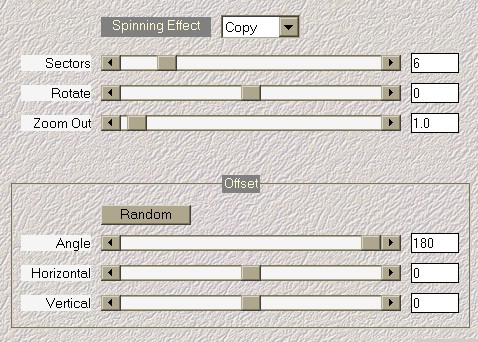
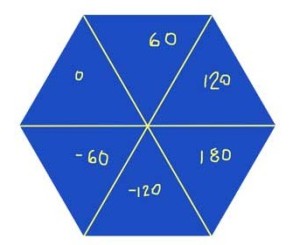
So one selection makes 6 hexagons, with the angle determining where the original comes from. Working with fabric, you can easily turn all the triangles of one hex to have a different point in the center. This makes 3 different possibilities for each hex. Working in the photo editor, it’s a little more difficult. You have to move the selection so that a different point is in the center (overlapping hexagons) to get the other variations.
Here is my first attempt at this in Photoshop. I cropped out one repeat on my cloth photo and used an arbitrary size of hexagon. I should probably have made it half the size of the repeat so it didn’t fall off the edge, or not cut my original down to only one repeat.
I used 3 different selections (red, orange, yellow) that overlapped. That means I got the same triangles in the overlap, but they use a different point as center, so they look different.
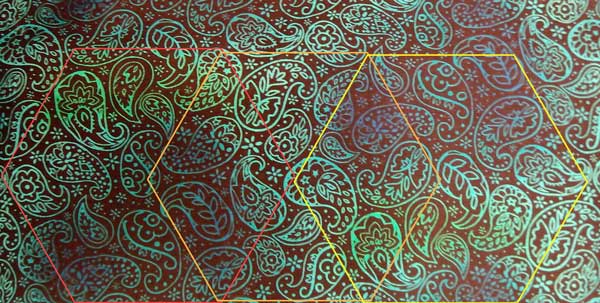
This is a pretty busy cloth to start with, so the hexes are busy too. I think they are really nice. The colors can be arranged to flow in the hexes.
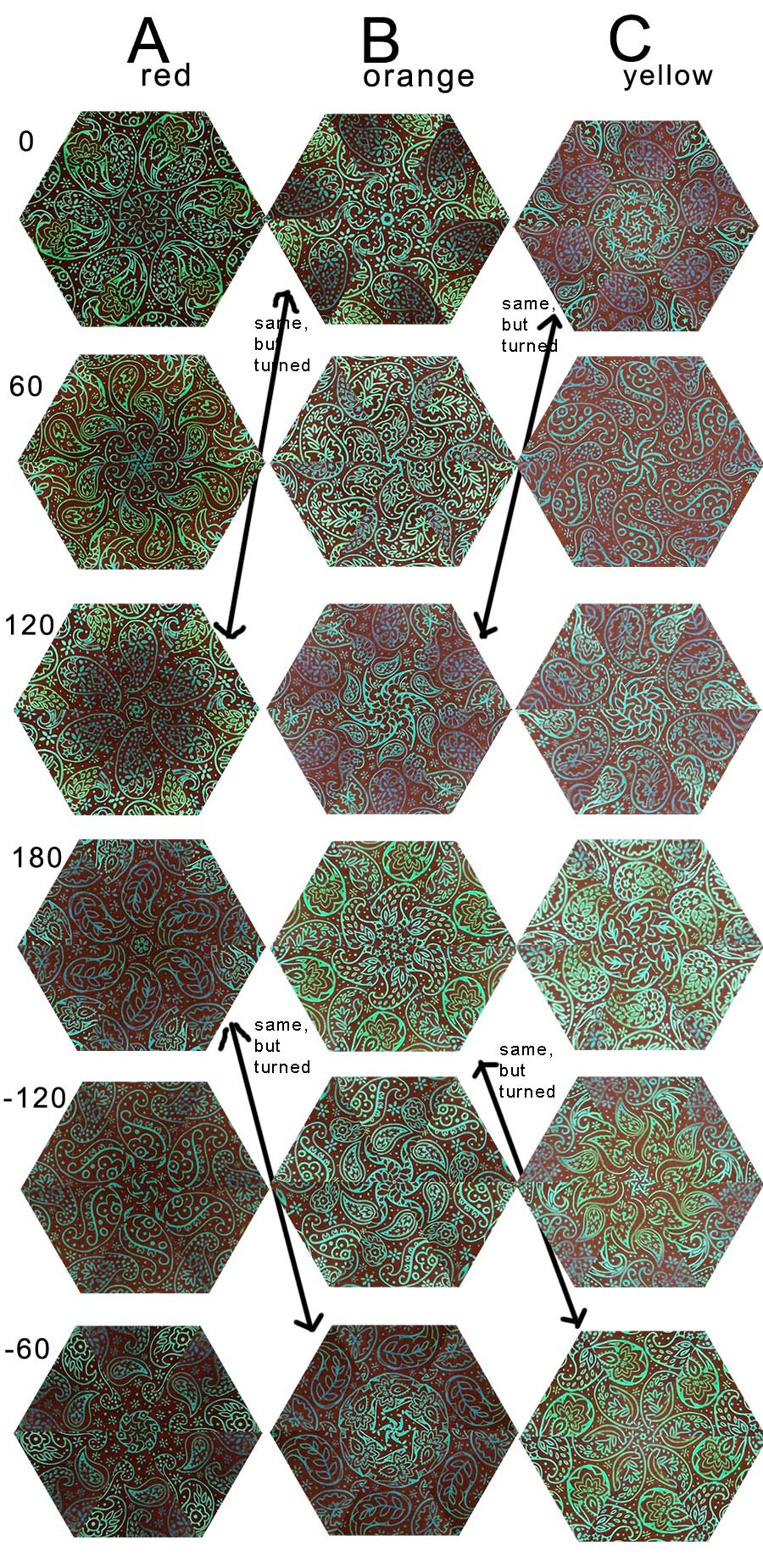
Large Print
I really love the look of those busy hexes, but I haven’t decided to make anything yet. I wanted to see what a large pattern print looks like. This photo is of about 3 feet of cloth and it doesn’t quite get one repeat. It’s busy, but also large with blocks of different colors.
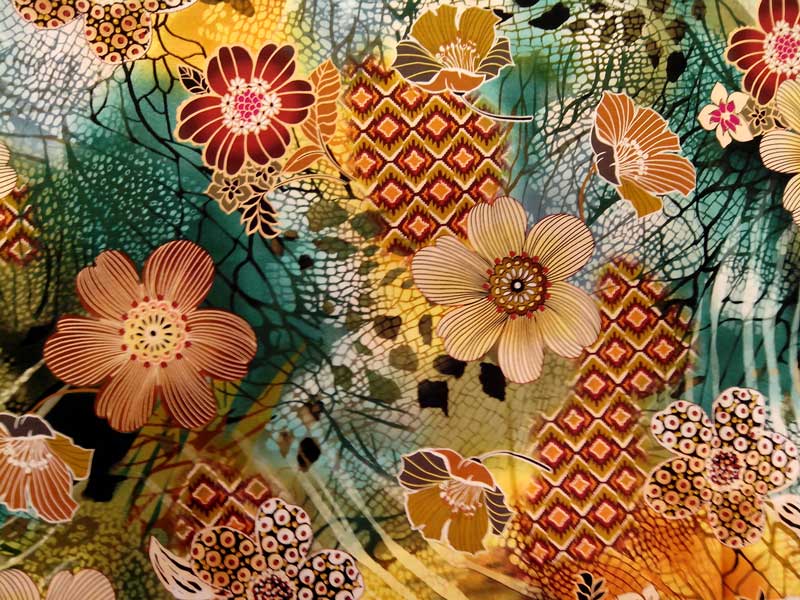
Here are the hexes I made. I found out that you need to have your hexagon selection with the points left and right. I made these with the points up and down and so they aren’t triangles quite. I didn’t feel like redoing all of these though. It might be difficult to arrange these into one unit, but they are pretty individually.
This cloth is also a large print with blocks of color.
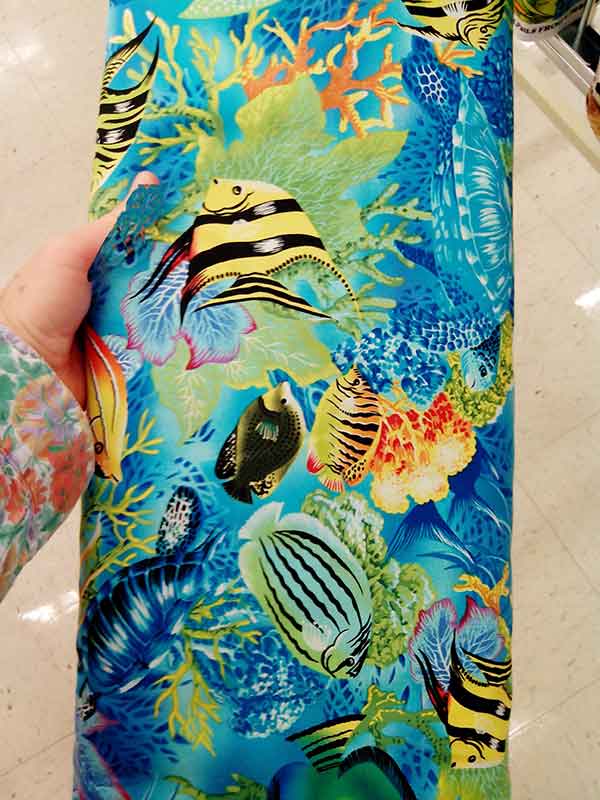
The hexes are pretty, but quite a variety.
Very Busy
I guess I like busy cloth. I’ve always liked the look of marbling, so I thought I’d try this fabric.
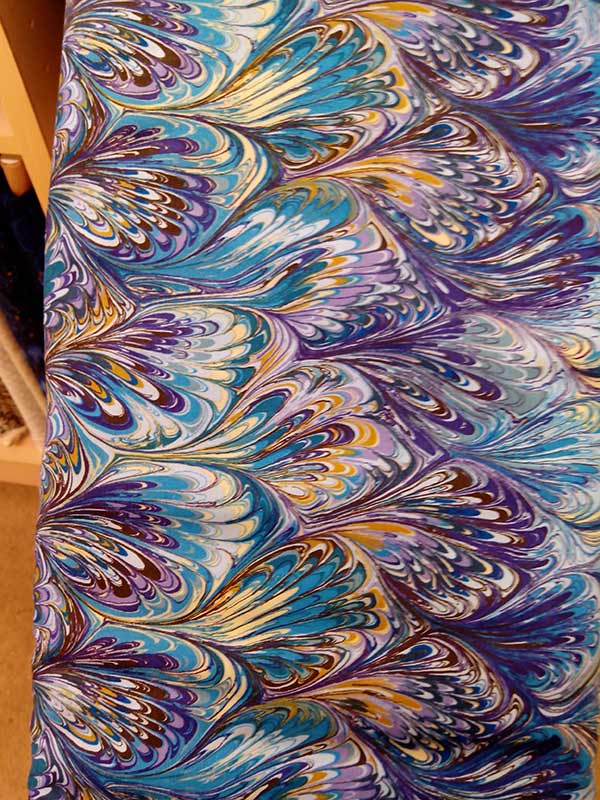
I tried two different sizes of hexagons. I think I like the larger ones better.
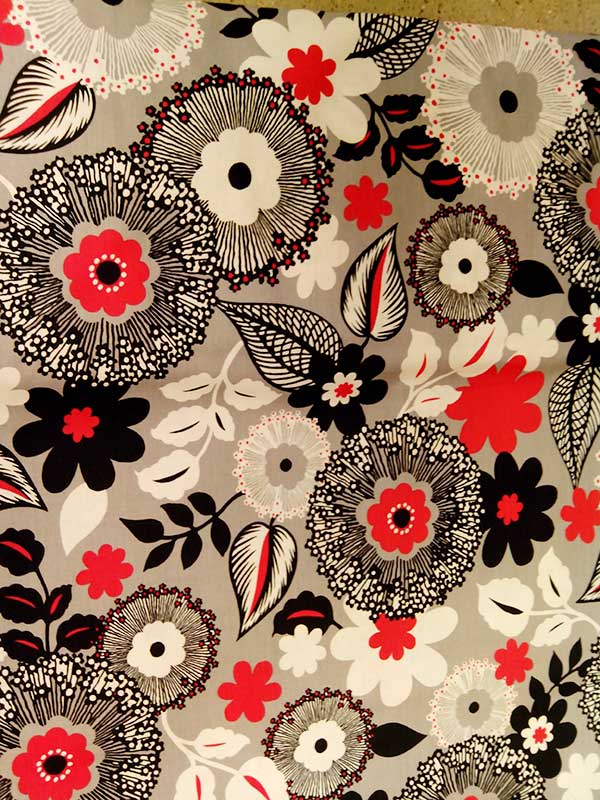
It’s hard to tell which hex size would work best on this type of pattern.
Stripes
I thought this might be interesting.
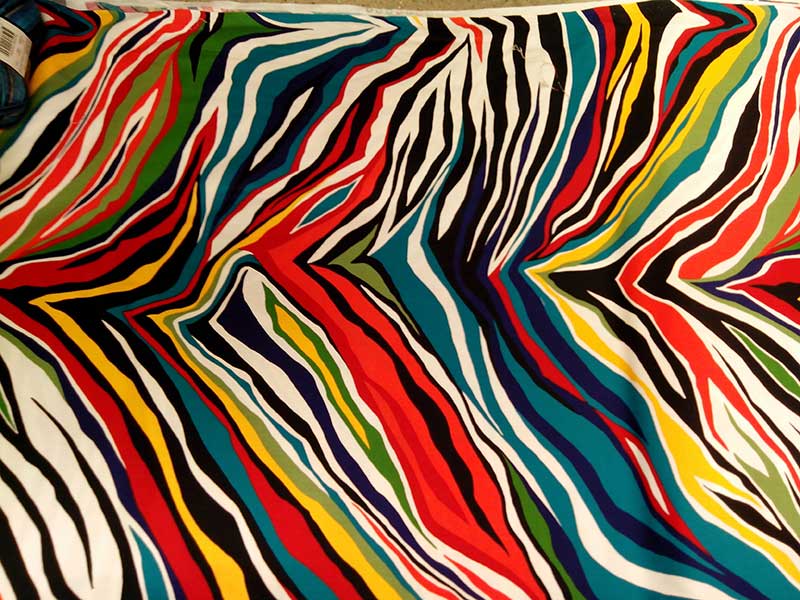
But there needs to be more curves. Even with three different sizes, it doesn’t work that well. The small size ends up with lots of similar blocks.
This one has more curves. It probably needs more color.
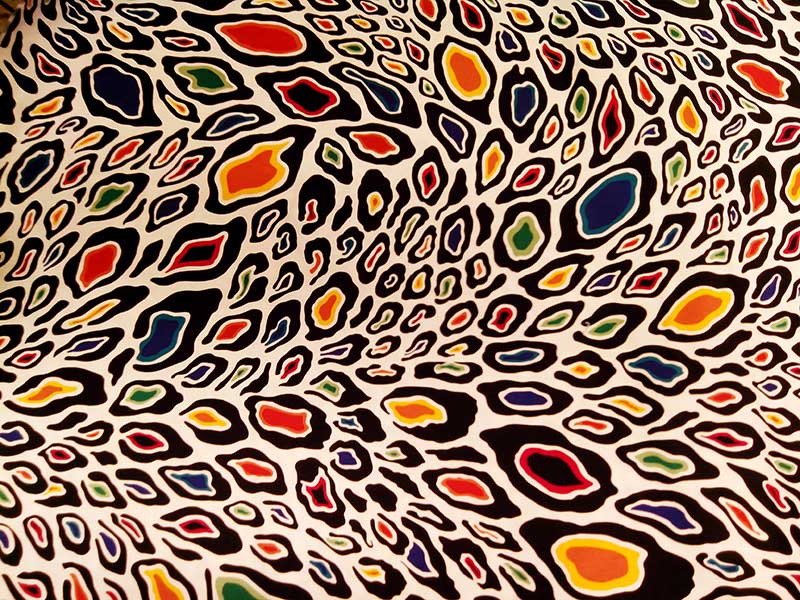
I think the larger hexagon works better.
This one has more curves and more color.
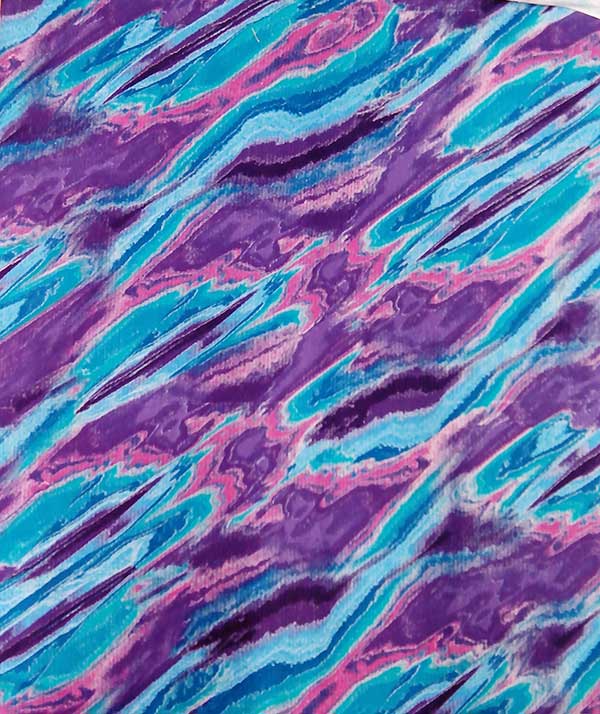
But even the big hexagon doesn’t overcome the big blobs of color.
Flowers
There are such nice colors in this one, with a lot of contrast.
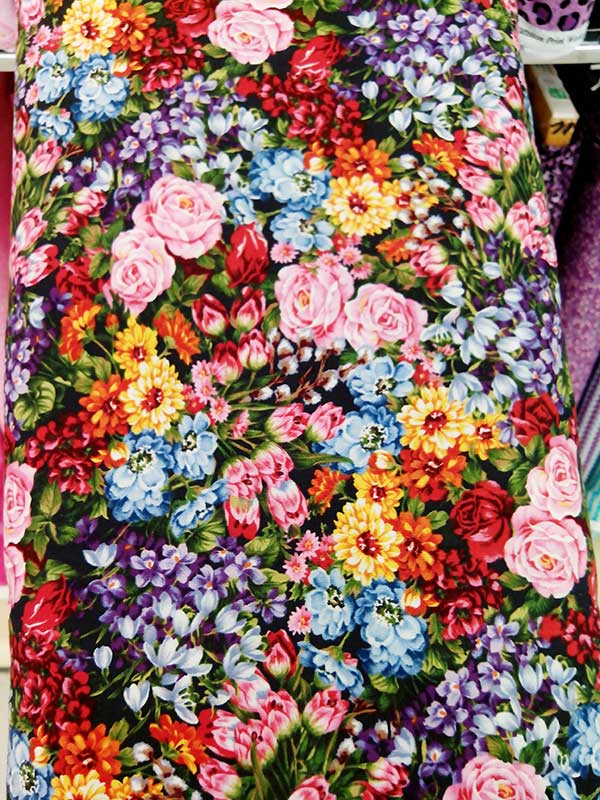
I thought the smaller hex size would be better because the flowers are smaller, but most of them ended up being mostly one color. A lot of them look like flowers. There are a few that are quite striking. The bigger hexes win this one.
More flowers, fewer colors.
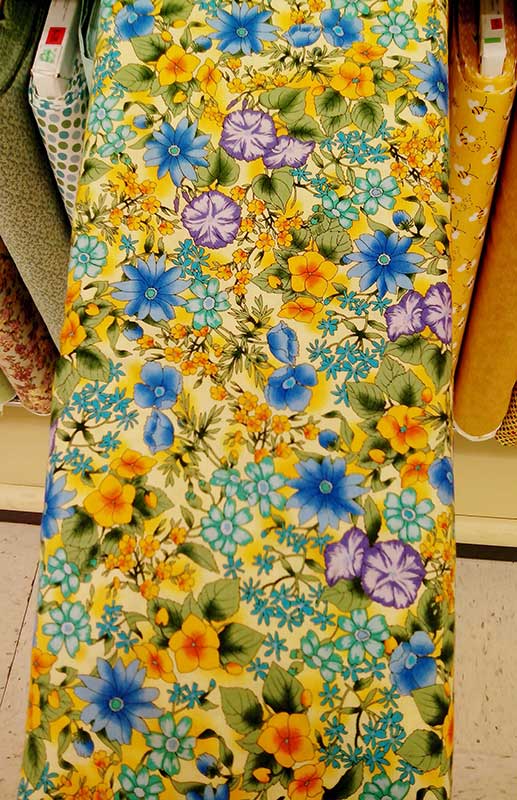
I didn’t even notice some of the pretty colors until I made these hexes. It’s hard to choose which size I prefer.
Other
The Mardi Gras pattern has a lot of color and curves.
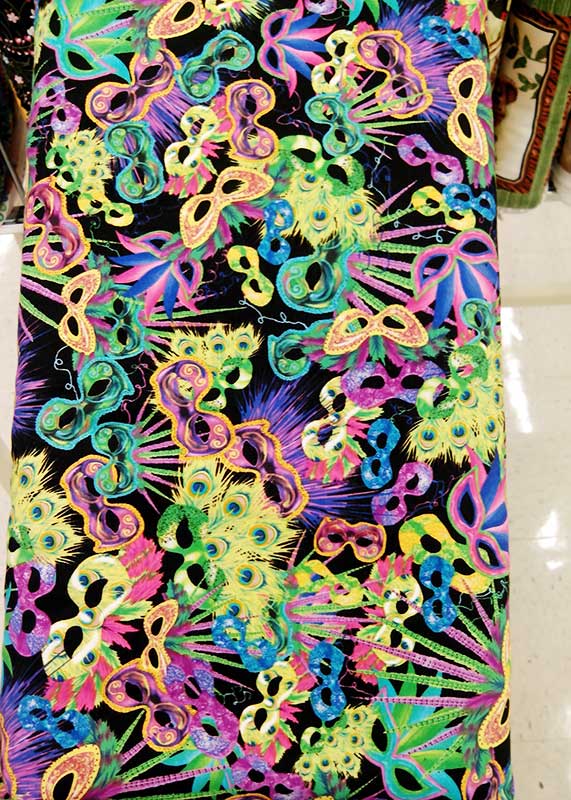
Some of these hexes are really nice. Not sure what to do with them, though.
I originally started this with a fabric I found online.
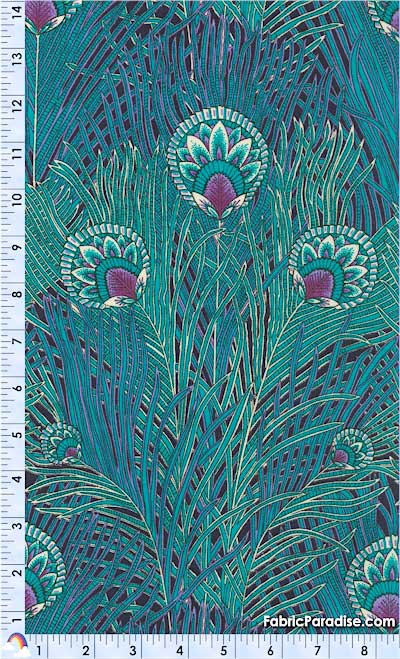
I never saw a bad hex.
The more realistic peacock feather doesn’t work as well as the stylized version.
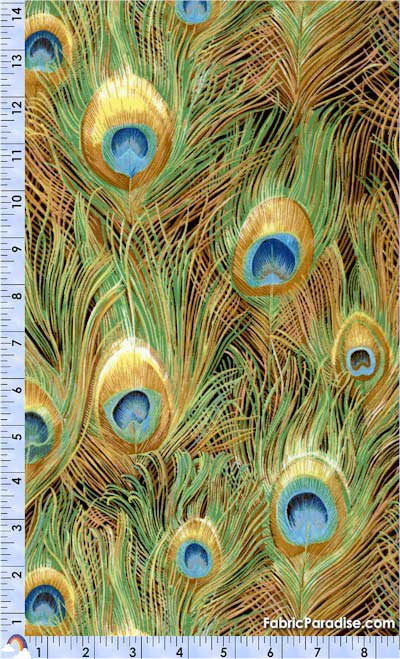
This batik cloth is busy yet not. I love the look of the cloth.
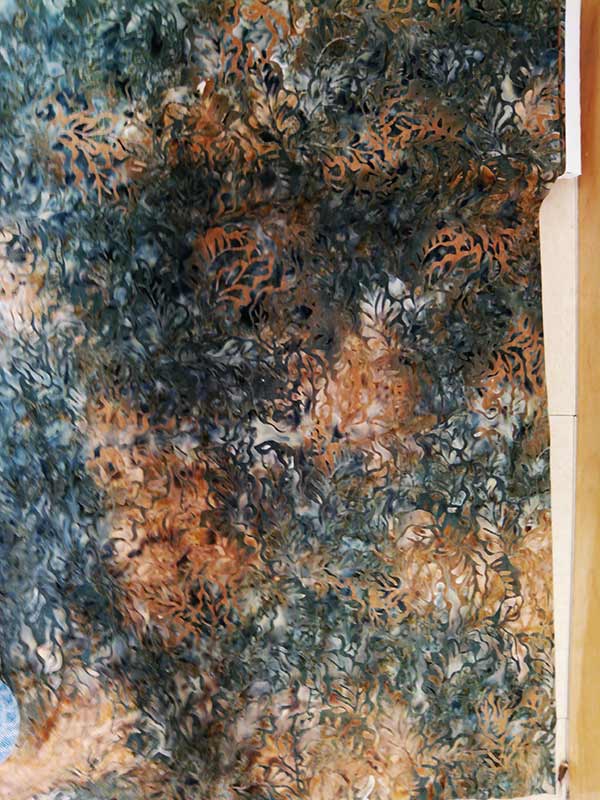
I love the look of the hexes also. There are a surprising number of colors in there.
Layout
This is the only one I’ve ventured to lay out in a design of some sort. The first pass at it was just an attempt to sort by color. I don’t like it.
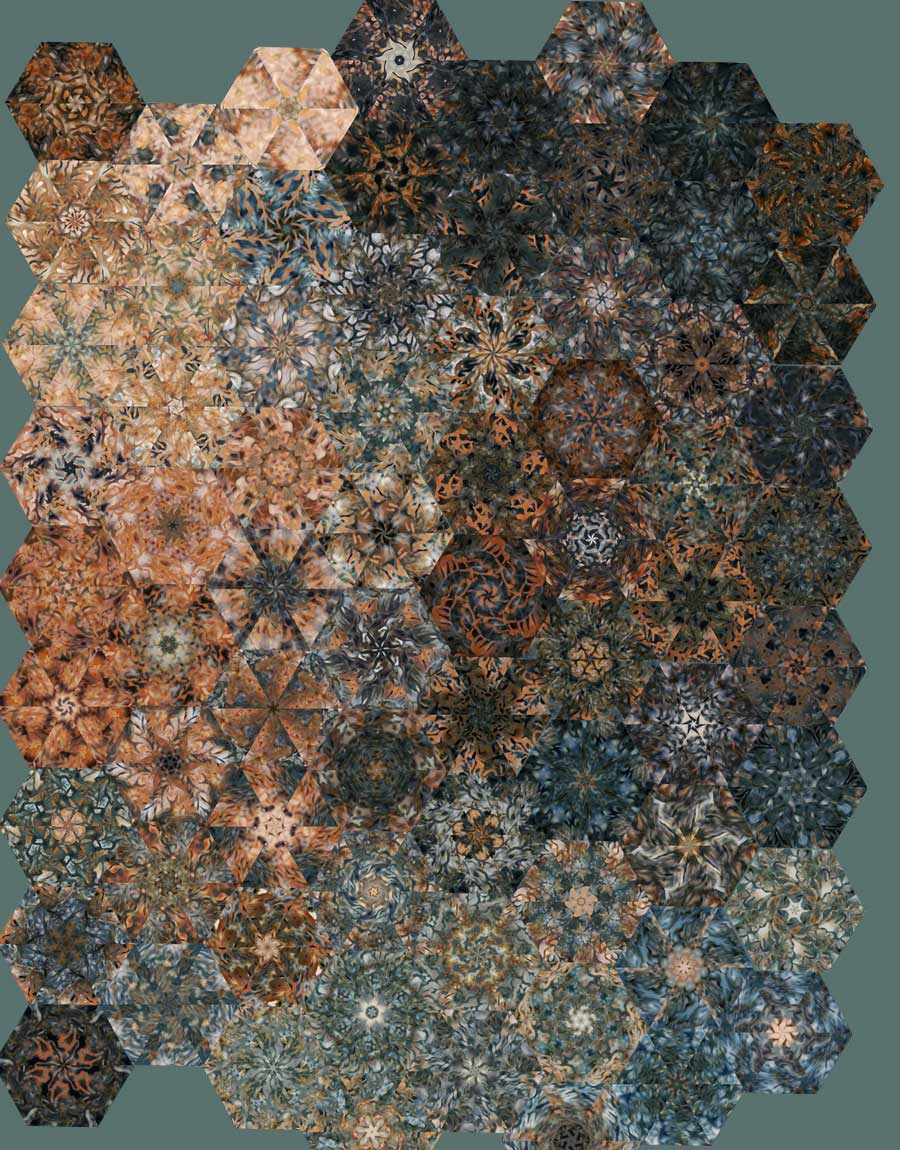
The second attempt was after I looked at some of Bruce Seeds’ quilts. I think it looks a bit better. (and I just noticed I can see it a lot better as a thumbnail size)
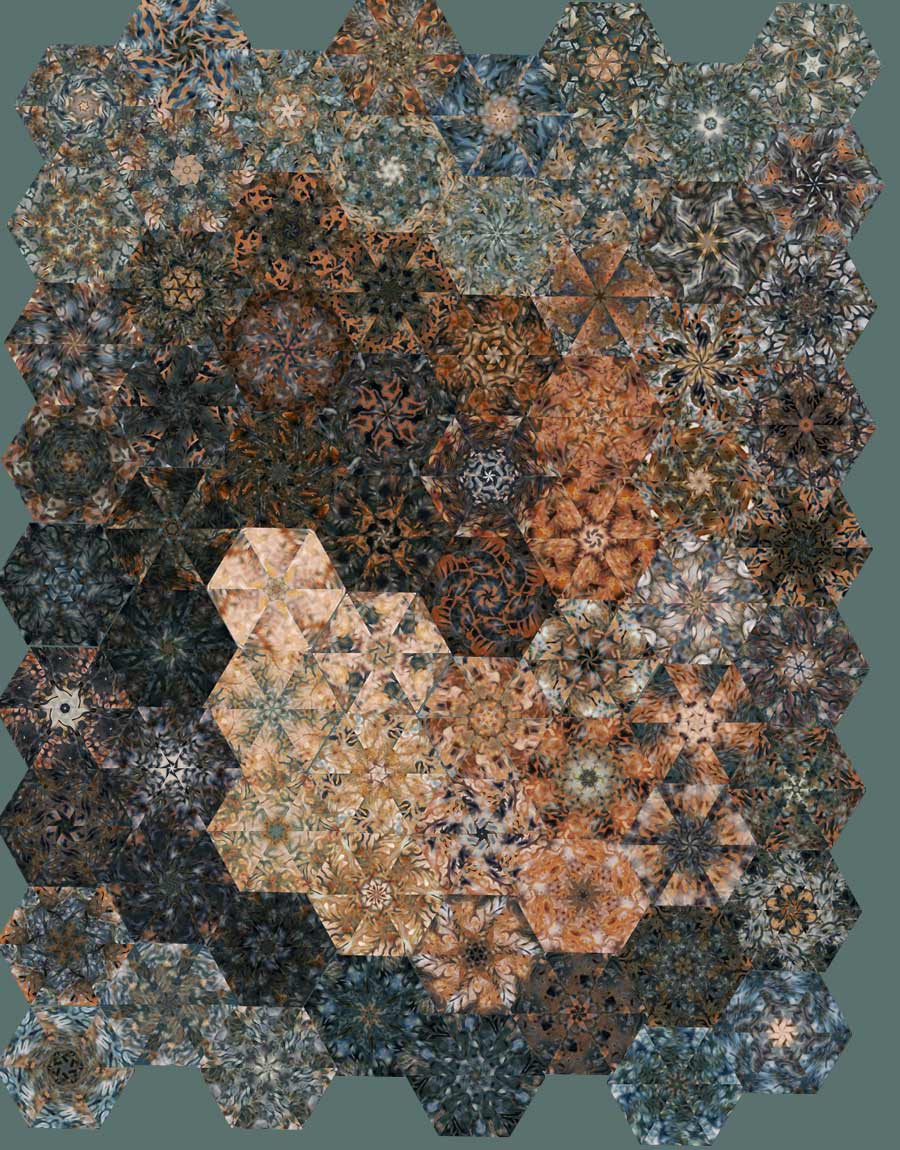
Well, that’s it for now. I see there are 97 images attached here so I better quit.
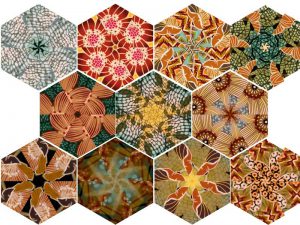
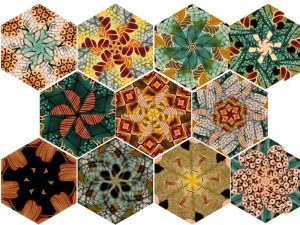
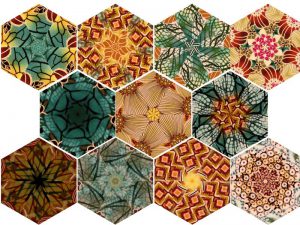
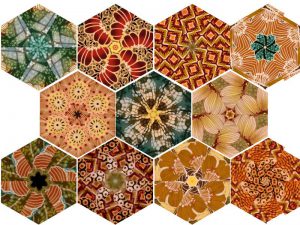
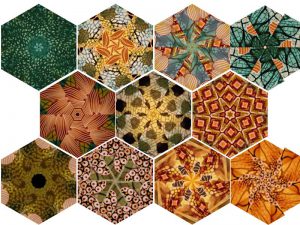
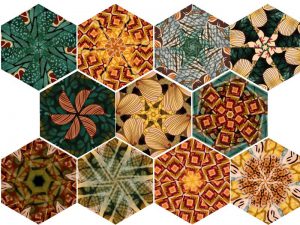
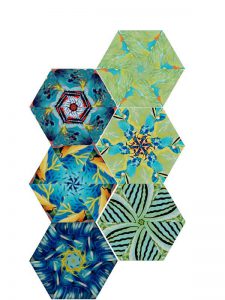
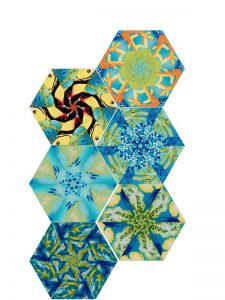
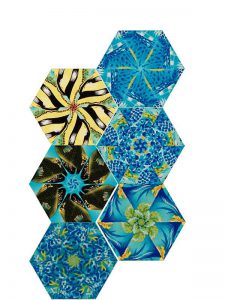
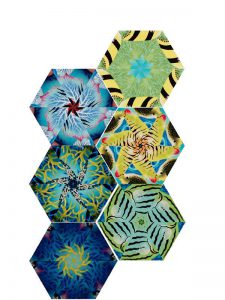
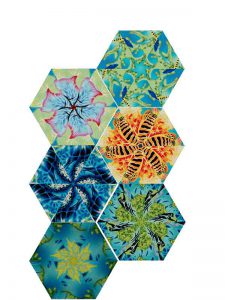
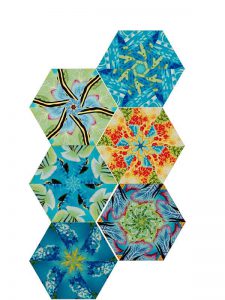
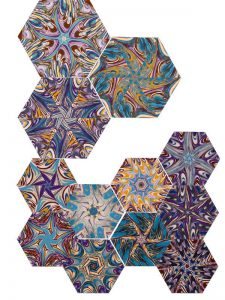
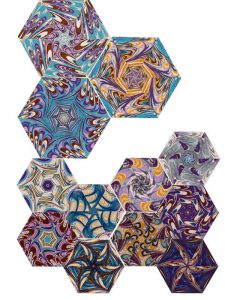
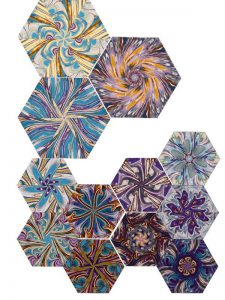
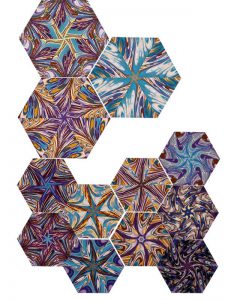
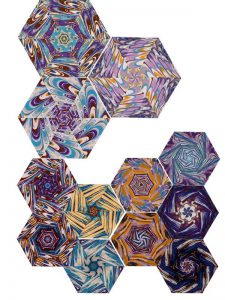
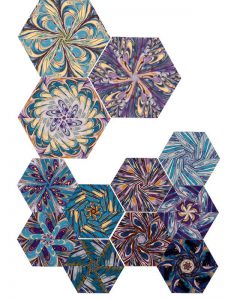
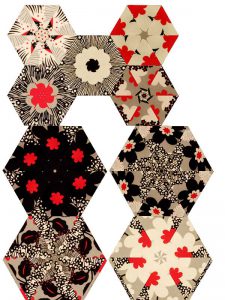
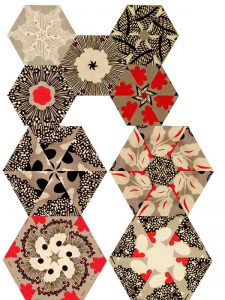
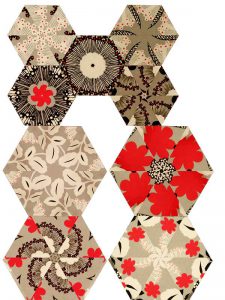
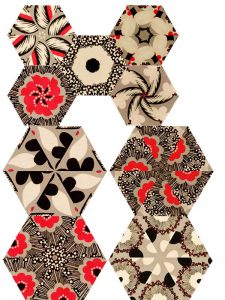
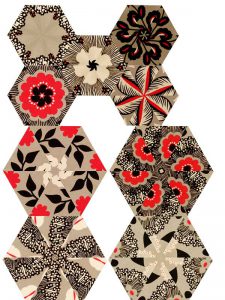
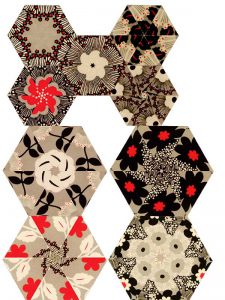
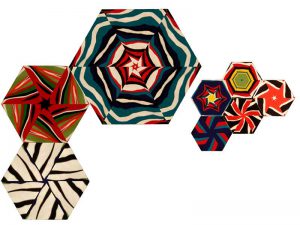
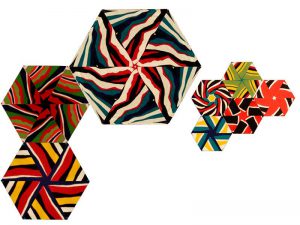
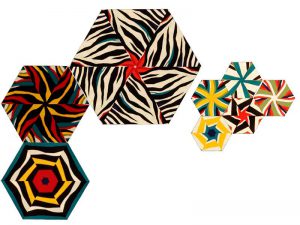
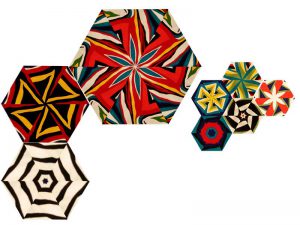
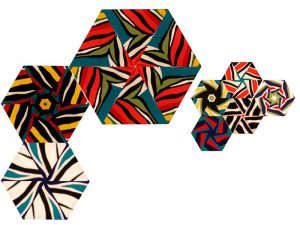
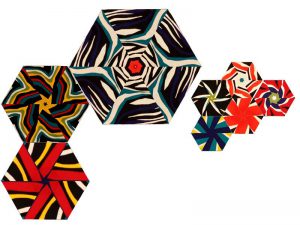
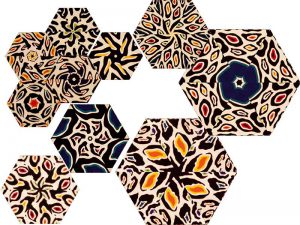
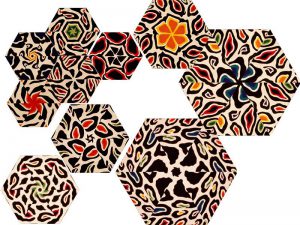
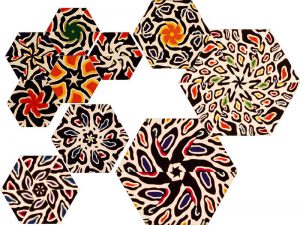
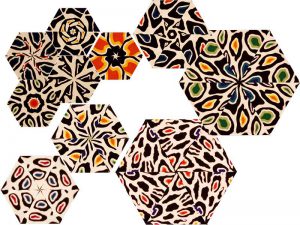
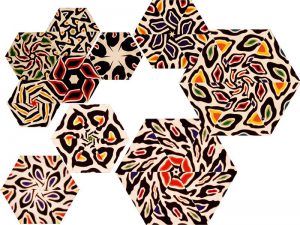
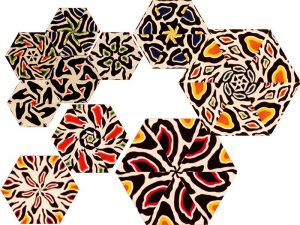
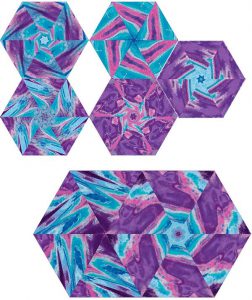
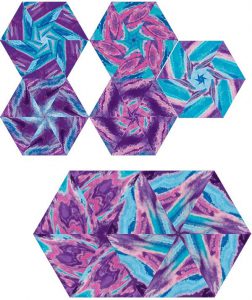
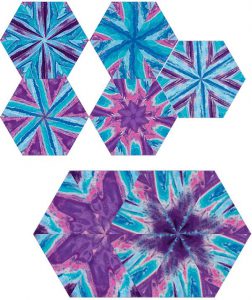
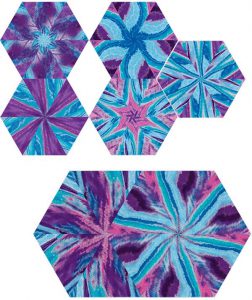
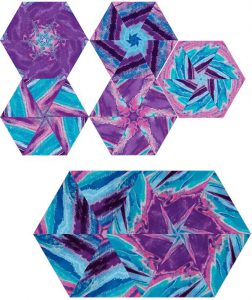
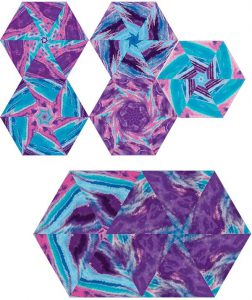
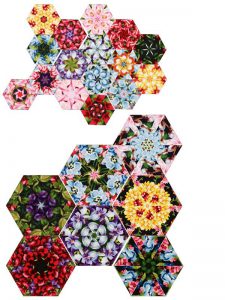
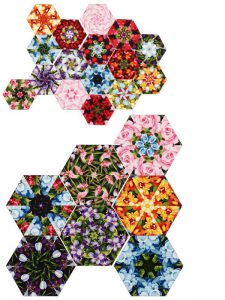
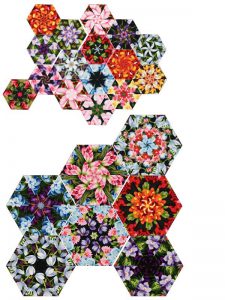
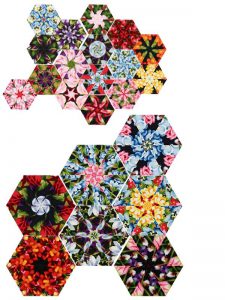
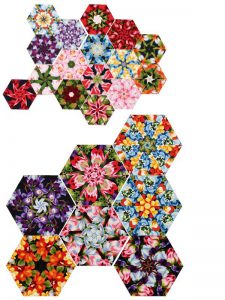
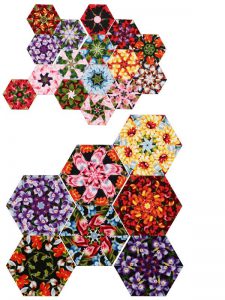
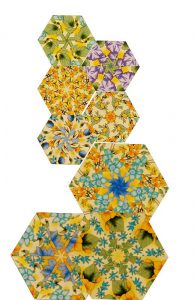
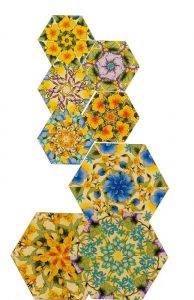
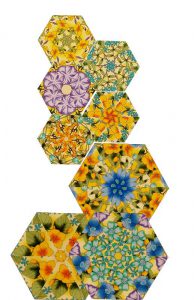
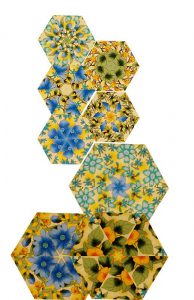
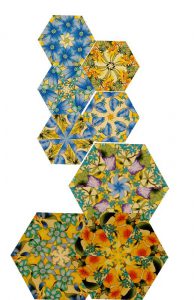
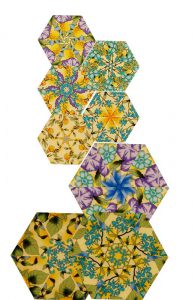
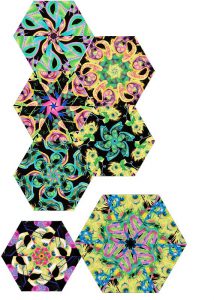
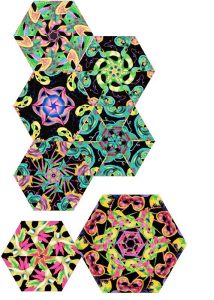
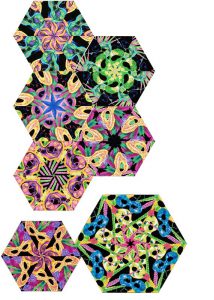
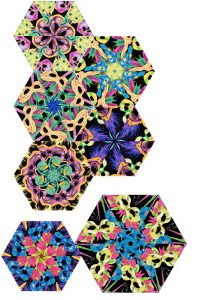
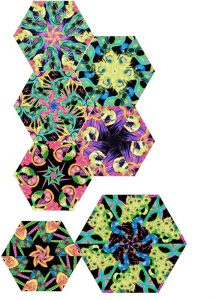
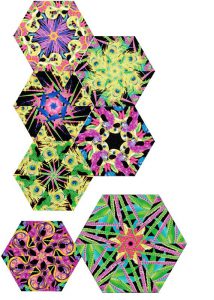
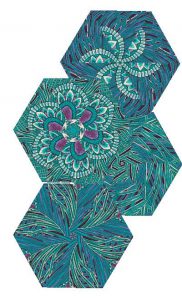
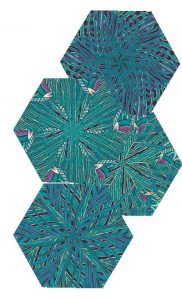
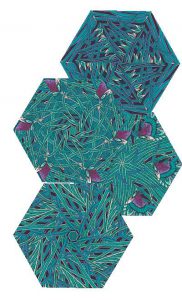
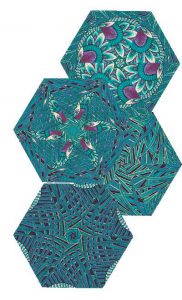
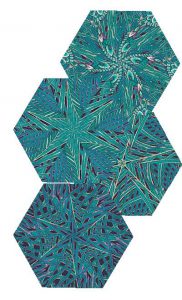
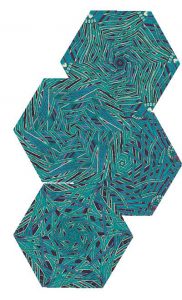
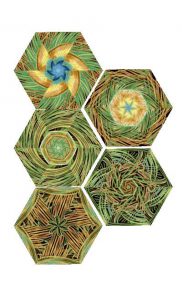
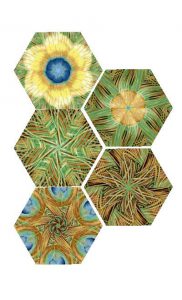
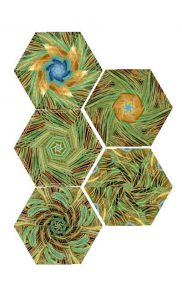
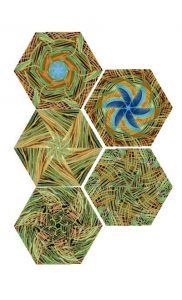
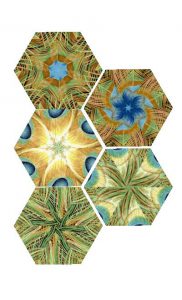
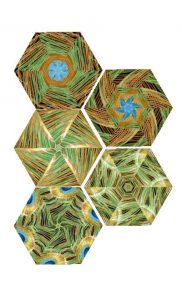
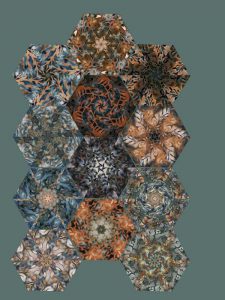
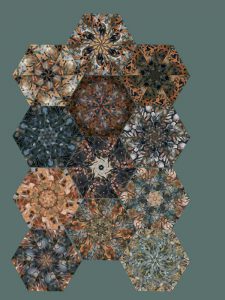
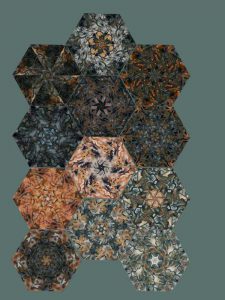
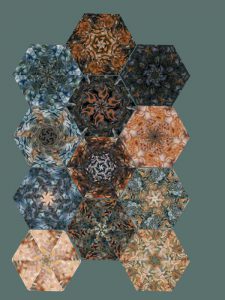
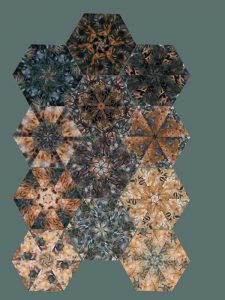
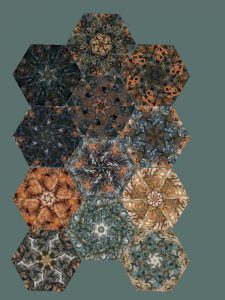
Wow! What fun! They all look great. I really like the fish one. But that batik… that’s really amazing. It would take some time to really play with those blocks in different designs, but it’s gorgeous! I might have to look around for something like that. I’d love to see you put something like this together.
Wow! That is something I might like to do. Bet it is one of those projects that would last a few years. I like things that I can put away when I am tired of them and then forget about them, and get surprised next time I find them. Hope you make one.
Laura, I don’t think that the batik would actually come out that way because the nature of the batik is the colors don’t repeat like the pattern part does. So it wouldn’t actually make those nice hexes.
I will have to give this a try ! Beautiful . Thanks
Looks like a lot of work. Beautiful !